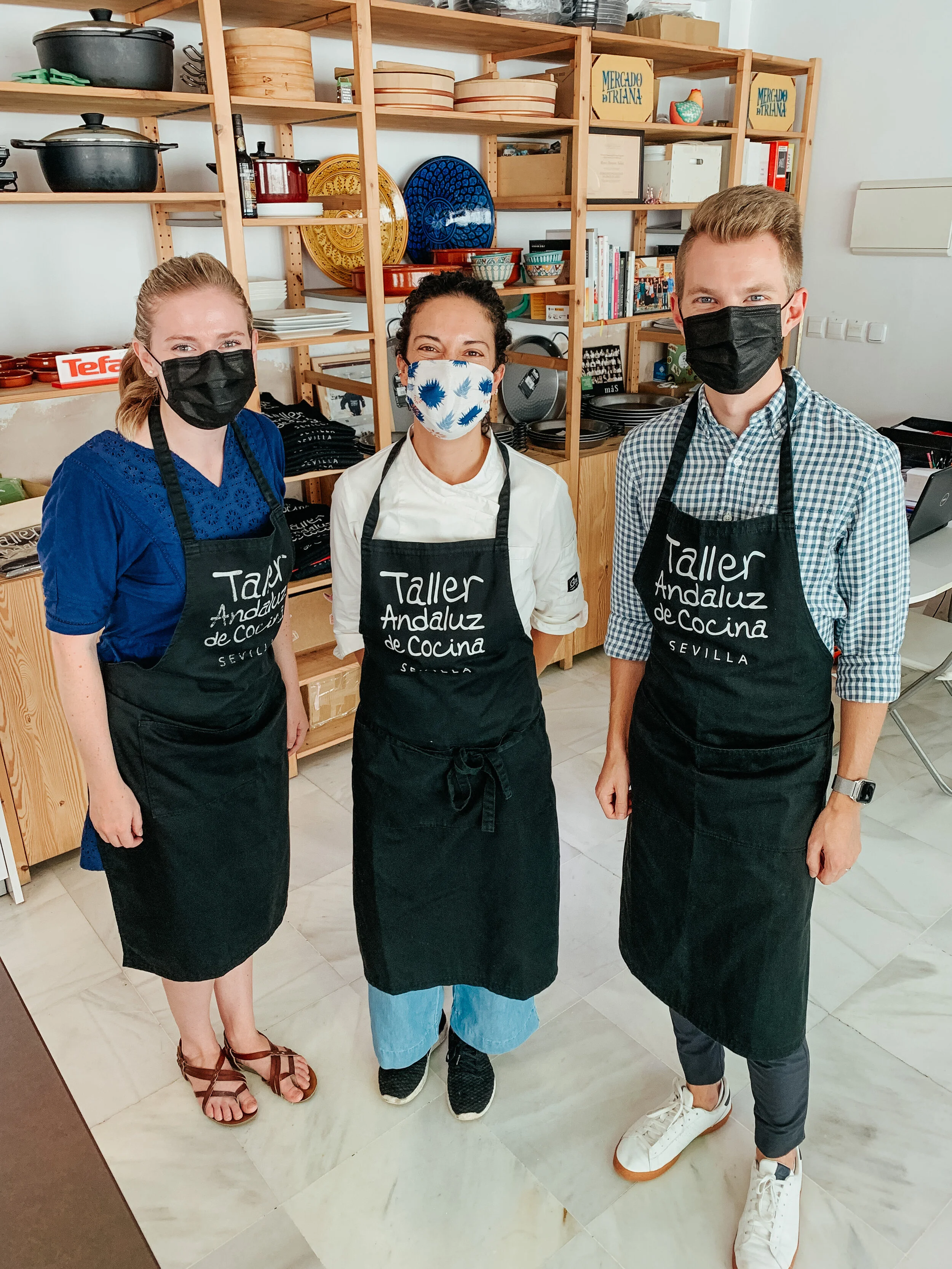Intro to Andalusian Cuisine

With a record heat-wave forecasted,
we decided to take a local cooking class. Neither of us are foodies, but learning about local cuisine is such a good way to immerse yourself in the culture. The class was offered at the Mercado de Triana, a 200 year-old market across the river from central Sevilla. Triana itself was originally a Roman settlement. Ruins from the 12th century have been discovered under the market floor and were once the seat of the Spanish Inquisition.
I chose this particular class because it included a market tour; the chefs highlighted their favorite vendors, what was in season, and exactly where they source their food. After that, we came back to their kitchen, located in one of the market stalls, and collectively prepared a traditional four-course Spanish meal.
Because it’s the dead of summer, we started with a cold tomato soup called Salmorejo. If you know Gazpacho, it is similar but uses tomatoes that are in-season year-round. Because it’s a cold soup, preparation is miniamal: you take the tomatoes and stale bread (it makes the consistency creamy) and puree them in a blender. After adding spices and a healthy amount of olive oil, it’s chilled until ready to be served.
In Southern Spain, you’ll find that more meals than not are served as “tapas,” or small dishes. These usually cost between 3-6€ and can be combined and shared to make a meal. One traditional tapa in Sevilla is “spinach and chickpeas.” Sautéed garlic, bread, and olive oil are ground into a paste. This is mixed into a pan with boiled spinach, chickpeas, tomato sauce, spices, and a bit of sherry to create a stew. It’s served hot, immediately.
For the main course, we prepared Paella. This is a bit of a controversial one for Spaniards as traditional Paella is a regional dish, exclusive to Valencia, and is only prepared according to a recipe dating back to the 15th century. Anything else is just “rice with some things.” Even though we were in Seville, our instructor, Victoria, had plenty of experience cooking in Valencia.
The term “paella” refers to the large, flat pan needed to prepare the dish. In fact, the word literally means frying pan. Peasants would gather whatever they could from the fields, and over time, the recipe reached consensus. As tourism came about on the Spanish coast in the 20th century, people began adding things like seafood and trying to make variations at home. But, Spaniards will assure you, there is only one paella.
To start, we deboned an entire chicken. By we, I mean Tori; it’s not my thing. The bones are used to make stock while the meat is fried. Next, green beans are added, and the chicken is pushed to the perimeter of the dish. Each time something is added, the previous ingredient is pushed to the edge. Following the green beans, garlic is sautéed in olive oil. Then, a mixture of tomato, sweet-smoked paprika, spices, and saffron is added. Following that, the stock is poured in and brought to a boil. Once boiling, a line of rice is added in the center that meets the water level. That is mixed and then the dish remains untouched for the rest of the duration: 5 minutes on high heat, 5 minutes on medium, 8 minutes on low. The rice should be al dente with a thin layer of toasted rice on the bottom.
There were 6 others in the class: a family from Switzerland and another couple from the States. We sat and enjoyed the meal together and topped it off with mint ice cream mixed with Cava. I don’t know how much we’ll be able to replicate in our limited Airbnb kitchenette, but we’ll certainly have some skills, and memories, we can take home with us.
This post is not sponsored.


















